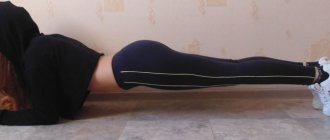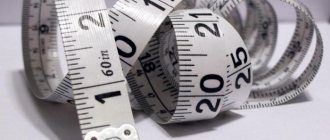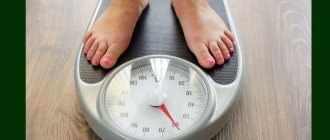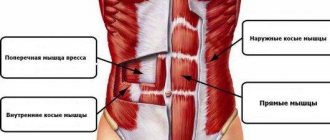Standard shoulder width for men
It is important to understand that an athletic figure and broad shoulders in men are primarily a matter of proportionality and body type (endomorph, ectomorph or mesomorph), and not muscle size. Excessively wide shoulders visually reduce a person’s height, just as the “height” of a hairstyle and the presence/absence of facial hair can make the body more powerful.
The secret is that, according to Da Vinci’s canonical proportions, the ideal width of a man’s shoulders is ¼ of his height - that is, 45 cm with a height of 180 cm. According to the same standards, the girth of the biceps should be equal to the girth of the neck and calves.
Greek statues
Interestingly, ancient Greek statues depicting gods and athletes, although they follow the rules of ideal proportions, are still made with certain violations of human anatomy - for example, tense back muscles are impossible with relaxed pecs.
Ancient sculptors improved not only the proportions of the bodies of the athletes who posed for them, but also changed reality, giving ease to uncomfortable poses and creating a composition of tense muscles that was unique in life. Apparently, the secret of the ideal is that it cannot be achieved.
Da Vinci's canonical proportions
The drawing, created by Leonardo Da Vinci and depicting the figure of a naked man in two superimposed projections, served as an illustration for a book about the life of the Roman architect Vitruvius, who was the first to describe on paper the proportions of an ideal person.
The pose with arms spread and legs brought together is inscribed in a square, and the pose with arms and legs spread out to the sides is inscribed in a circle. The center of the circle is the navel of the figure, and the center of the square is the genitals. Some explanations for the picture (1):
- the span of human arms is equal to his height
- human height is four cubits from the fingertips
- the distance from the hairline to the chin is 1/10 of its height
- the distance from the top of the head to the chin is 1/8 of its height
- the distance from the top of the head to the nipples is 1/4 of its height
- maximum shoulder width is 1/4 of its height
- arm length is 2/5 of its height
Figure proportions for artists
Beginning artists are taught how to draw a person correctly, starting with choosing the size of the head. The total height of the figure should be eight heads (see paragraph 4 of Da Vinci's rules). The next step is to fit the circle into the head (see title illustration).
The height of the head and neck should be two such circles, exactly the same as the distance from the navel to the lower border of the neck, while the maximum width of the shoulders should be three. The waist width is no more than one and a half circles, otherwise the proportions of the figure will be significantly distorted.
Figures of muscular people
One of the most important rules of proportionality for a muscular person is the ratio of shoulder circumference to waist width (see Figure 3). If we take the waist width as “a” and the shoulder circumference as “b”, then the ideal ratio would be (a+b)/a = a/b = 1.618.
Enlarged deltas, pectoral muscles, overdeveloped abs - all this can destroy fragile symmetry, making a person’s figure visually disproportionate. However, understanding these rules can change an initially unathletic figure beyond recognition.
Classic bodybuilder proportions
In the thirties of the last century, American anthropologist David P. Willoughby carried out many measurements of athletes, trying to determine the ideal muscle sizes that seem as correct as possible to the human eye. His results (3):
- Biceps size - 1.2 forearm sizes
- Forearm from chest width - 0.300
- Biceps from the circumference of each calf - 1
- Neck from chest circumference - 0.383
- Chest - 1.33 waist size
- Chest - 1.11 hip size
- Hips - 1.5 calf size
How to measure your proportions?
First, measure the circumference of your forearm at its widest point; then calculate the size of your biceps - 1.2 the size of your wrist. Compare with the measurement of each bicep and each calf. Calculate chest circumference - multiply forearm circumference by 3.33; compare with real value.
Then measure your waist (see illustration 4) and hips. According to ideal athletic proportions, the chest circumference should be 1.33 waist circumference and 1.11 hip circumference. Take these measurements once a month to track your training progress.
Creating an athletic figure is more about controlling the proportions of muscles, rather than simply increasing their volume. There is both the classical school of proportions, known since the time of ancient Greek statues, and modern measurements suitable for bodybuilders.
Taking measurements
Due to the fact that the issue is quite important and has been discussed for a long time, certain rules have been formed, adhering to which the measurements will be as correct as possible, and, not least important, objective. First of all, you need to get a measuring tape. Taking measurements with a regular ruler and thread is not the best option - it is both inconvenient and impractical. It is best to take measurements in the morning, when the muscles are in a relaxed (“cold”) state.
Wrist
Measurement location: in the thinnest part of the forearm, next to the hand.
Forearm
Position: bend your arm at the elbow, clench your hand into a fist, bend it towards the forearm (the angles between the hand and forearm, and between the forearm and shoulder are 90 degrees). Tighten your forearm muscles.
Measurement location: the widest part of the forearm, 1-2 cm away from the elbow.
Biceps
Position: bend your arm at the elbow (the angle between the forearm and shoulder is 60-80 degrees). Contract your biceps and triceps.
Measurement location: the widest part of the shoulder is approximately the middle of the biceps (the place of its peak).
Position: lift your chin, relax your neck muscles. Measurement location: just below the level of the Adam's apple.
Shoulder girdle
Position: stand straight, straighten your shoulders and move them back a little, arms along your body. All muscles are in a relaxed state.
Measuring location: The measuring tape should pass through the top of the pectoral muscles and the middle of the deltoids.
Position: stand straight, breathe calmly, muscles relaxed.
Measurement location: the widest part of the chest (1-3 cm above nipple level)
Position: stand straight, breathe calmly. We don’t strain our abdominal muscles, we don’t pull them in.
Measurement location: middle of the abdomen, slightly above the navel.
Position: Stand straight. The muscles are relaxed.
Measurement location: at the widest part of the pelvis (middle of the gluteal muscles).
Position: Stand straight. Shift your body weight to the leg being measured and tighten your thigh muscles.
Measurement location: the widest part of the thigh (at the very top of the leg).
Shin
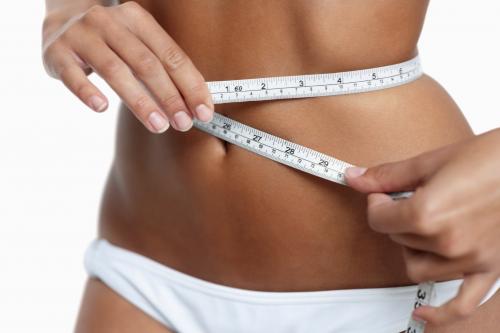
Position: Measure while sitting. Tighten your calf muscles (put your foot on your toes and transfer your weight to the leg you are measuring).
Measurement location: the widest part of the shin.
Ankle
Position: Measure while sitting. The leg is relaxed.
Measurement location: just above the foot, in the thinnest part of the shin.
Men are advised to take measurements of all parts of the body. For girls, it will be enough to measure the chest, abdomen, pelvis, thigh and lower leg.
Our website was created to make the training process more convenient. Each user of our site has his own individual account where you can save your measurements!
Become one of us
How to take measurements correctly
It is better to measure body volumes immediately after waking up. This will provide a more accurate measurement result, since in the morning, the muscles are relaxed and rested.
It is difficult to obtain objective figures in the evening hours. Activity during the day leads to muscle tension and can distort real indicators. For measurements, you will need a centimeter tape measure. The correct measurement technique involves a number of nuances.

Table No. 2. Measuring technique
Instructions for taking measurements
In order for the results of measuring body proportions to be as correct as possible, they should be carried out in the morning. The fact is that the body after sleep has the most accurate values. During the day he experiences stress, as a result of which the data may be far from the truth.
Measurements should be taken using an ordinary tape with sections. It will show the most correct results. If you don’t have one on hand, you can use nylon thread and a regular ruler or construction tape.
In order to track changes in the proportionality of body parts, you should keep a diary. It is best to take measurements no more than once a week.
Pay attention to your diet. It should contain as much protein as possible and a minimum of fat. Fast carbohydrates should also be avoided. They break down very quickly and do not bring any results. Try to eat more vegetables and cooked meat. This will allow you to build muscle mass as quickly as possible, and will also increase the productivity of your workouts.
1 Comment
Where is the formula by which all tabular data was calculated. For example, with a height of 186 cm, I have an arm span of 198 cm, but this looks quite organic, from this calculation regarding the forearm, my indicators will be completely different, if when you request data on Google, your article is one of the first to be displayed, then at least do it its more scientific and readable.
Ideal body proportions for men
Different periods of time had their own specific ideas about male beauty. The ancient canons are reflected in the sculpture of Polykleitos “Doriphoros”, also called “Spear-bearer”. The height of the figure is 178 cm. Parameters of the body parts in girth: lower leg - 42 cm, biceps - 38 cm, buttocks - 108 cm, chest - 119 cm, thigh - 60 cm, forearm - 33 cm, wrist - 19 cm, waist - 93 cm.

Another, no less famous image of masculinity is considered to be the sculpture of the Greek sun god Apollo, created by Leocher, the courtier of A. Macedonian. The physique of ancient heroes looks “square”. The body is distinguished by a powerful neck and back, too voluminous at the bottom.
During the Renaissance, a new type of perfect figure, the “Vitruvian Man,” appeared, created by the great artist and scientist Leonardo Da Vinci. The famous illustration is still used today as an example of correct body symmetry.
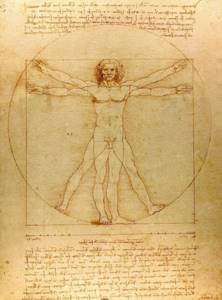
Today's norms largely overlap with the canons of past times. Conditional indicators of compliance of individual sections of the body are built based on the entire length of the body.
Table No. 3 Typical ratio of male figure parameters
The data varies depending on the age and physiological characteristics of the person. Enhanced transformation of the body occurs during the period of 16-25 years.
Ideal proportions in bodybuilding
Professional athletes have their own schemes for calculating ideal volumes. A number of authoritative techniques that are used by bodybuilders will be highlighted.
The most used include the school of the direction’s founder, Joe Weider, and the system of the famous coach Marcel Rouet.
Table No. 4 Correlation of body parameters according to Wider
(cm)
Table No. 5 Correlation of proportions according to Marcel Rouet
(cm)
The path to the perfect body
The Path to a Well-Shaped Body Beginner
To embark on the difficult path of improving your body and putting it in order, you first need to take care of the source material. In this case, the source material refers to weight . Of course, all tables of the ideal height/weight ratio are very conditional, but there is no point in trying to do something purposefully: change the proportions, having a flabby, loose body or a complete absence of at least some muscle mass, as if it were the body of a teenager. Even if reduced to ideal proportions in centimeters, such a body will not look very aesthetically pleasing.
For a person who has taken the path of regular exercise and proper nutrition
If you have resolved the issue of excess weight or excessive thinness, your best friends should be a mirror and a sewing tape measure .
As for the centimeter, you should regularly monitor how many centimeters in volume make up the key parts of your figure. Measurements should be taken early in the morning, when you just woke up, your body is back to normal, rested, and your muscles are relaxed. The only exception may be people who, for one reason or another, suffer from swelling in the morning. You don’t need to tighten the centimeter until it hurts, but it shouldn’t hang either. There's also no point (besides having fun) taking measurements after an intense workout if you're not already preparing yourself to hit the big bodybuilding stages where you can hammer your muscles before the show. We will proceed from the fact that we are all ordinary people and 75% of our time those around us see us not on the pump.
The mirror will help you correctly assess the quality of the centimeters you gain, and it will also tell you how well the losing centimeters transform you when losing weight. Also, to minimize subjective value judgments about your own progress, it is recommended to do small photo sessions once a month. If possible, you need to use the same angles and lighting.
For an experienced athlete
The next step already applies to people who have been engaged in some kind of physical activity for quite a long time and are working on their body. This step is very difficult, but not physically, but morally.
It is necessary to identify problematic, under-toned areas of your body, lagging muscle groups and concentrate on working them out. At the same time, you need to understand which parts of your body nature has made strong and prone to rapid development and completely or almost completely stop working on them.
The difficulty is that the man sees that nature has given him powerful leg muscles that are prone to rapid growth, and he experiences a surge of good mood and pleasant emotions every time he pumps them. It is this pleasure that you need to deprive yourself of, so as not to continue to increase the already overdeveloped areas of your body, increasing the disproportion .
Modern body beauty standards
The standards of a modern man combine the features of an ancient warrior, a young man of the Renaissance and the ideas of modern times.
The typical image of a handsome man is associated with a number of criteria:
- developed V-shaped back, prominent arm muscles;
- long neck, broad shoulders;
- clear waist and elastic abs;
- narrow hip area;
- muscular legs;
- The upper half of the body and the bottom are the same length.
Ideal proportions for athletes
Strength sports require the athlete to have strength, endurance, and developed muscle structure.
A professional level of physical fitness does not involve too much bulk, as in bodybuilding. The athlete must be of strong build and have clearly defined and proportional muscle atlas.
Most guys strive to achieve a pumped up athletic figure. A large back with a clearly defined trapezoidal part, sinewy arms with a sculpted shoulder area, elastic abs and strong legs with pronounced quadriceps and hamstrings are considered indicative.
The standard of beauty for a male model
In the modeling world, there are laws. For a young man to walk along the catwalk, his height must be at least 182 cm.
At the same time, an overly muscular figure is not welcome. Most of all, young guys with clothing sizes 46-48 are in demand. Preference is given to fit guys or even slightly thin guys. Attractive and regular facial features play an important role.
Ideal male body proportions for women
Girls are attracted to broad-shouldered young men of medium or tall height, with proportionally developed muscles. However, the requirements for a man's physique are much more varied than the standards of female beauty.
Details are important:
- Strong arms;
- narrow hips;
- sculpted torso;
- piercing look.
For representatives of the fairer sex, male appearance is largely determined by the overall impression and silhouette as a whole. For women, an image that inspires confidence and a sense of security is considered masculine, regardless of the specific indicators of a particular part of the body.
Ideal parameters of a male figure: height, waist, shoulders
There are no generally accepted criteria for appearance. In different nations, due to genetic characteristics, the norms of male body structure will differ. In addition, the indicators of a modern ideal figure and healthy appearance also vary.
Modern beauty standards
Today the following are considered beautiful:
- A powerful V-shaped back that shapes the entire silhouette.
- Clearly prominent trapezoids and shoulders, as if contrasting with a long, sophisticated neck.
- Developed, voluminous chest muscles adjacent to dry, clearly visible abdominal muscles.
- The legs are developed proportionally at the top, not lagging behind in volume, but at the same time not distracting all attention to themselves.
Yes, perhaps this is the ideal figure of a man from the movies.
Exact numbers
To create that same V-shaped silhouette, it is believed that the pelvis and waist circumference should be 10% and 25% less than the chest circumference, respectively, and the neck should be only 38% of the chest.
The thigh circumference is equal to 60% of the pelvic circumference. The lower leg, in turn, makes up only 40% of the pelvic circumference and 60% of the thigh circumference. Another sign of good build is the equality of the shin and tense biceps in volume.
Of course, it’s easy and simple to calculate your ideal proportions, but to make your life easier and not make mistakes, you can use a table of ideal proportions, as well as a variety of calculators that will tell you your ideal proportions using different formulas, reflecting different points of view on the male figure.
Main types of male figure: examples, “yes” and “no” in the wardrobe
British fashion designer Hardy Amies wrote the following in one of his books: “A man should look as if he bought his clothes wisely, put them on carefully and completely forgot about them.” Sounds good, but what does “buy wisely” mean?
There are a few well-known rules in men's fashion, such as those that prohibit wearing a striped jacket with a plaid shirt, that you must match your socks to your boots, and that you are not allowed to take off your jacket without a vest underneath. However, the fashion industry is evolving every year: it is worth recognizing that many recommendations are outdated and are only suitable for rare formal occasions.
Only three selection criteria - material, color and proportions - do not lose relevance over time. Today we will take a closer look at proportions, namely, we will tell you how to determine the type of male figure and choose clothes in accordance with it.
Main types of male figure
Let’s immediately make a reservation that the division into body types is conditional; in most cases, body proportions can be changed with the help of physical exercises. A simplified classification only allows you to correctly look at yourself from the outside in the current moment and choose what will most advantageously emphasize your strengths and hide your weaknesses.
So, there are 4 main types of male figure.
Triangle

This body type is characterized by broad shoulders and a narrow pelvis. The waist is in line with the hips or slightly wider. The latissimus, round and back muscles are noticeably developed, while the figure may not give the impression of being massive.
Most often, the “triangle” body type occurs in men who professionally engage in non-strength sports, for example, track and field athletes or swimmers. But with the right approach, this form can be achieved through training in the gym. For example, actor Chris Evans has a typical triangular male body type. His height is 184 cm, weight is about 80 kg, and for the role of Captain America he gained 10 kg of pure muscle.
What to wear
Almost everything suits slender and fit “triangles”, and especially:
- skinny jeans,
- long sleeves,
- tight t-shirts,
- T-shirts under a jacket,
- shirts with open collars,
- plain two-piece suits.

What not to wear
Men with this body type have broad shoulders and thin legs, so there is a risk of getting an asymmetrical silhouette. Remember: the fewer elements you have in your clothes, the better you will look. Use color to create a cohesive look: if you're wearing a three-piece suit, at least two of them should be the same shade. In this case, the combination “light bottom - dark top” is preferable to “dark top - light bottom”.
- Suits with different colors of trousers and jacket.
- Narrow collars. In a classic suit you cannot do without them, but in other cases it is better not to focus on the neck area - this can create the illusion of hunched shoulders.
- Layers and baggy pants. These clothes will hide your figure and make your look shapeless.

Trapezoid
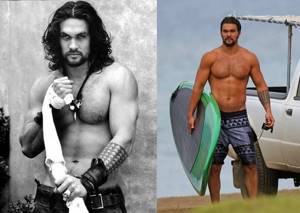
This type of figure in men is very similar to the triangular one. The difference lies mainly in body volume: “trapezoids” have a wide torso, large arms, and powerful muscle mass. As a rule (but not necessarily), men with this build are heavy. The difference in the girth of the shoulders and waist is not as noticeable as in the “triangles” - the silhouette of the upper body can be mentally outlined more like a trapezoid.
Actor Jason Momoa, who plays Khal Drogo in the Game of Thrones series, spent many hours in the gym to get his body in this shape. His parameters: height – 193 cm, weight – 106 kg.
It is easiest for men with this body type to choose clothes. In fact, the main thing is that things correspond to good taste, please you and do not restrict your movements.
- slim fit jeans,
- chinos,
- cargo pants,
- loose T-shirts and shirts.
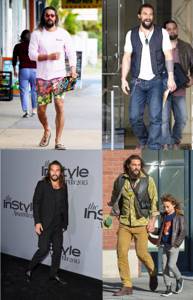
Despite the fact that almost all clothing models are suitable for men with a trapezoid body type, you should not go too far in experiments. If you try really hard, you can look weird even with Jason Momoa's figure.
Be careful with things like:
- long sleeves
- turtlenecks,
- tight T-shirts and T-shirts,
- skinny jeans.

Rectangle

The type of male figure “rectangle” can be determined by the fact that the shoulders, waist and hips are approximately at the same level. The shoulders may be slightly wider than the hips, but do not give the impression of being massive. Often these men look thin and find it difficult to gain weight.
The serial Sherlock Benedict Cumberbatch has a similar body structure. His height is 183 cm, weight is 78 kg.
Choosing clothes to suit the figure of a man of this type is not difficult. However, if you want to hide your thinness and look more presentable, you will have to try.
- Chunky knit cardigans and hooded sweatshirts, as well as double-breasted jackets and coats, will help to “increase” the volume of your shoulders. Pair them with dark jeans or trousers to create a more triangular silhouette.
- Wear ties, scarves and other neck accessories - they visually widen your shoulders.
- Layering is the perfect trend for you. It will help create volume and achieve harmonious proportions.

How does waist size affect your health?
Normally, a man’s waist circumference should be no more than 94 cm. Even exceeding this figure to 100 cm is a sign of excess fat. A waist circumference greater than 102 cm indicates obesity.
Even if the weight remains within the acceptable range, excess fat deposits around the waist negatively affect health and life expectancy. Obesity in the abdominal area leads to high cholesterol levels, cardiovascular diseases, and a predisposition to cancer pathologies. This is due to the fact that fat deposits create a high load on internal organs and the musculoskeletal system. Potency often suffers as well. Doctors have concluded that every extra 5 cm of waist circumference shortens a man’s life by about 15-17%.
You can determine whether the size of the waist zone is normal based on the man’s height. The waist should be no more than 1⁄2 of the height in girth. If the ratio is more than 0.53, then this should be alarming. An index of 0.58 indicates obesity.
Men often say that they have a hereditary tendency to develop belly fat. But in most cases this is not the case. Only 25% of a person's body composition is determined by genetics. Everything else depends on the person’s diet and lifestyle.

Most men are far from ideal


